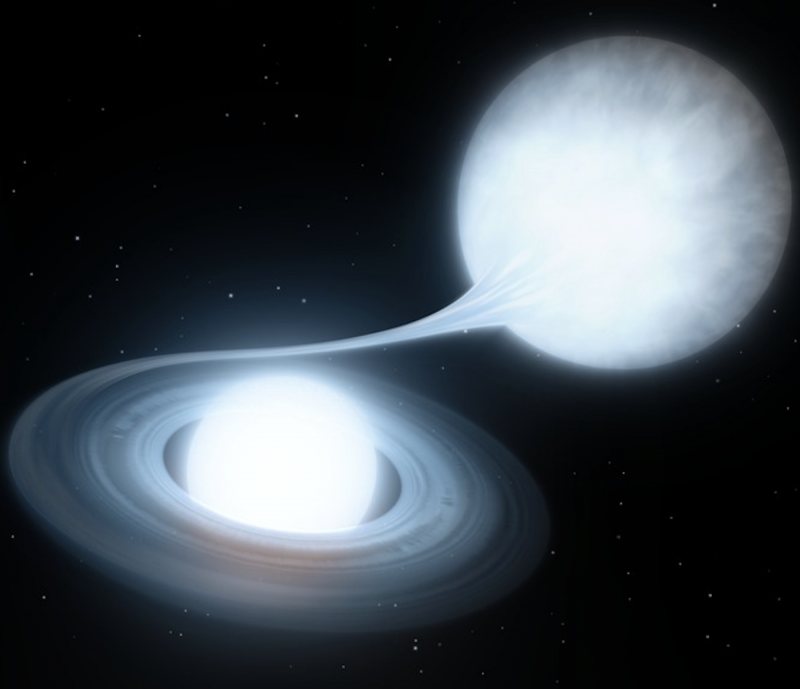
Metal-rich star catapulted out
A metal-rich star, believed to be the shrapnel from a supernova, is racing out of our galaxy at a scorching speed. The star is named LP 40-365. It lies just 2,000 light-years away in the Milky Way. And it’s relentlessly increasing its distance from Earth. Astronomer J.J. Hermes of Boston University said in a statement:
This star is moving so fast that it’s almost certainly leaving the galaxy … [it’s] moving almost 2 million miles an hour [3.2 million kph].
That’s in contrast to our sun’s motion through space, which is about 448,000 miles per hour (720,000 kph). Boston University released information about this star earlier this summer (July 8, 2021). The scientists’ published study appeared on June 7 in the peer-reviewed Astrophysical Journal Letters.
Supernova shrapnel
This oddball star is one of an elite group of fast-moving remnants of stars. A chunk of the star’s core apparently survived the supernova explosion intact. This core was shot out as shrapnel into space by the force of the supernova explosion. The chunk continues to speed away from the site of the explosion. And it’s believed it’ll make an eventual exit from our galaxy. Astronomer Odelia Putterman of Boston University, a co-author on the study said:
To have gone through partial detonation and still survive is very cool and unique. And it’s only in the last few years that we’ve started to think this kind of star could exist.
These shrapnel stars from supernovae are the fastest-moving stars known. And, perhaps not coincidently, they’re also the most metal-rich stars seen to date. Hermes said:
These are very weird stars … What we’re seeing are the by-products of violent nuclear reactions that happen when a star blows itself up.
By the way, the word “metals” doesn’t mean what you might think when used about a star. “Metals” to an astronomer are any elements heavier than hydrogen or helium. As you may know, the heavier elements are forged inside stars. This particular star is rich in “metals” such as neon and oxygen.
? THREAD: Let's talk for a second about one of the weirdest stars in our Galaxy. We don't have long — it's moving so fast it's escaping the Milky Way! It's also the most metal-rich star known, a hunk of neon and oxygen hurtling through space, SHRAPNEL FROM A SUPERNOVA! (1/9) pic.twitter.com/GLjuqbD3Tv
— JJ Hermes (@jotajotahermes) May 17, 2021


Which star survived?
The team made the discovery using data from NASA’s Hubble Space Telescope and Transiting Exoplanet Survey Satellite (TESS). As LP 40-365 races out of the galaxy, survey data showed a change in brightness. The data indicate that the star is rotating, or spinning. Putterman said:
The star is basically being slingshotted from the explosion, and we’re [observing] its rotation on its way out.
Hermes explained:
We dug a little deeper to figure out why that star [was repeatedly] getting brighter and fainter, and the simplest explanation is that we’re seeing something at [its] surface rotate in and out of view every nine hours.
That rotation rate can tell astronomers what kind of system this weird metal-rich star came from. Type 1a supernovae occur when a pair of orbiting white dwarf stars become unstable. One white dwarf siphons material off the other until its mass becomes so great that it triggers an explosion. In May, Hermes said in a tweet:
We are fairly certain that … one star in the binary underwent a thermonuclear supernova. We’re less sure if the survivor LP 40-365 was the star that exploded, or the donor to the exploding star.
The nine-hour rotation rate is a clue, though. The mid-July statement from these astronomers said:
Based on LP 40-365’s relatively slow rotation rate, Hermes and Putterman feel more confident that it is shrapnel from the star that self-destructed … Because the stars were orbiting each other so quickly and closely, the explosion slingshotted both stars. And now we only see LP 40–365.
The scientists hope their discovery can bring insight into other white dwarf pairs as well as provide some insights about supernovae. Putterman said that their paper:
… adds one more layer of knowledge into what role these stars played when the supernova occurred. By understanding what’s happening with this particular star, we can start to understand what’s happening with many other similar stars that came from a similar situation.

Bottom line: Scientists discovered a metal-rich star they believe is shrapnel from a supernova explosion. The star is racing out of our galaxy at nearly 2 million miles an hour (3.2 million kph).
Source: 8.9 hr Rotation in the Partly Burnt Runaway Stellar Remnant LP 40-365 (GD 492)











